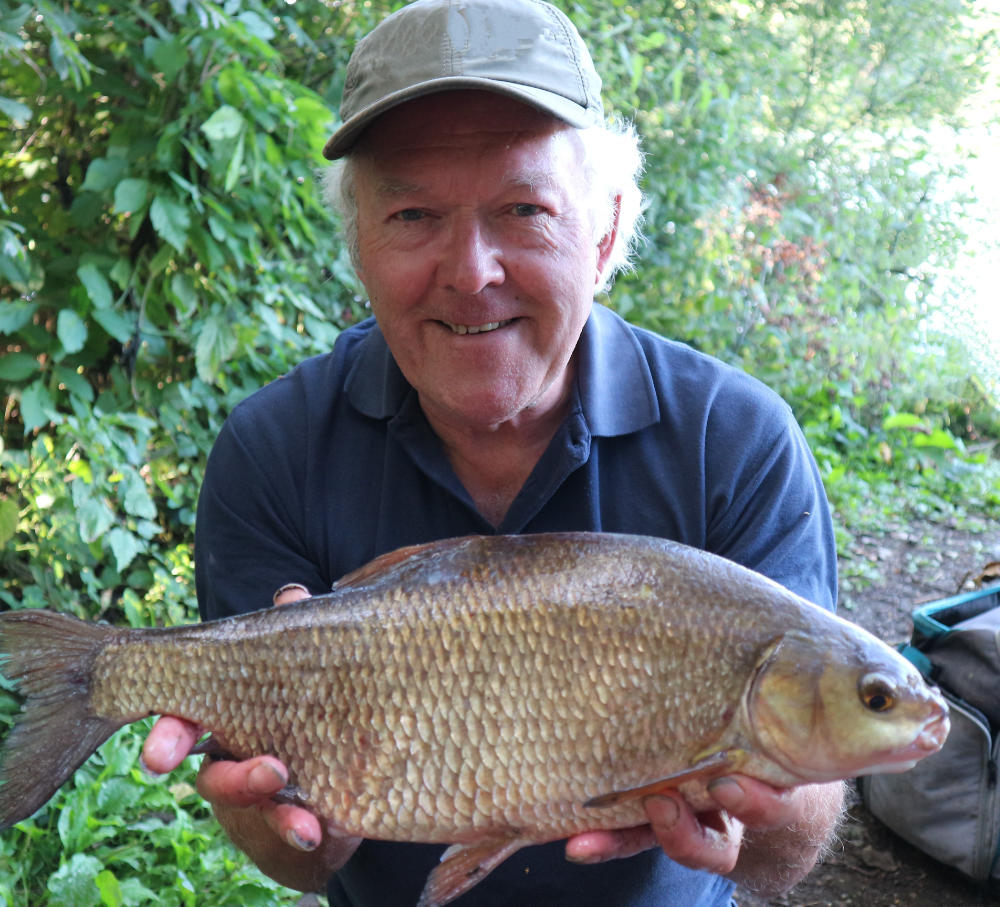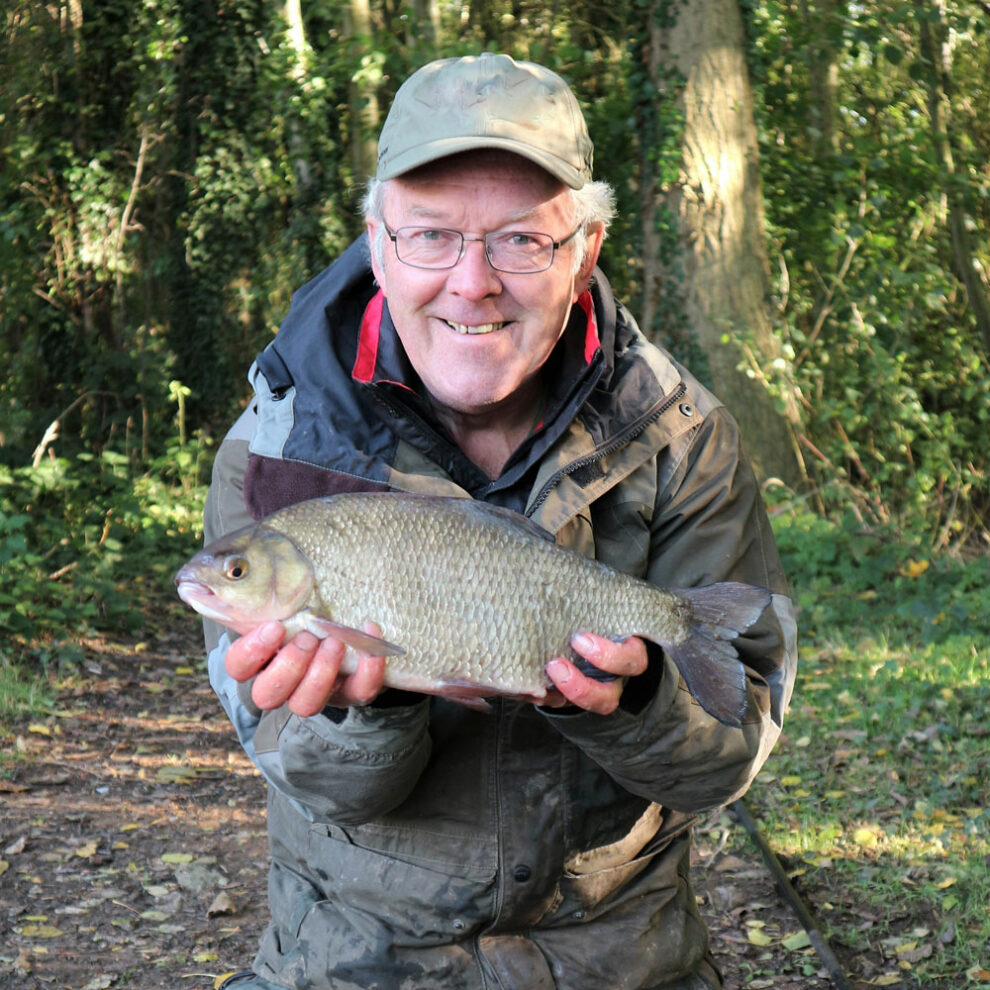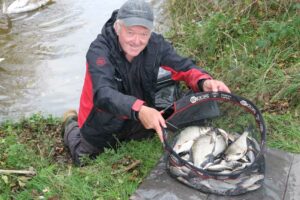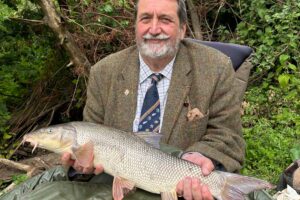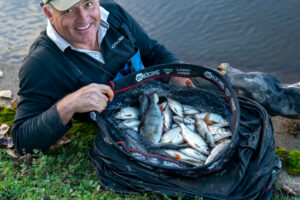In Deep
Hybrids thrive particularly well in deep stillwaters that hold big shoals of roach and bream. I first encountered them in big numbers over in Ireland while exploring the peaty Loughs and rivers, always enjoying catching these streetwise fighters. You could be dealing with lively red fins one minute or sluggish bronze slabs the next, when suddenly something very different and angry turned up. This cross-breed inherits all the agility of big roach, combined with the weight factor its bream ancestry provides. Hybrids have become so dominant in certain venues, some people believe they are breeding. When I lived in Grantham, deep lakes like this one at Woodland Waters provided exceptional hybrid action. I enjoyed many intriguing hours working out how to catch these fish, after realising there were a lot more of them than I initially realised.
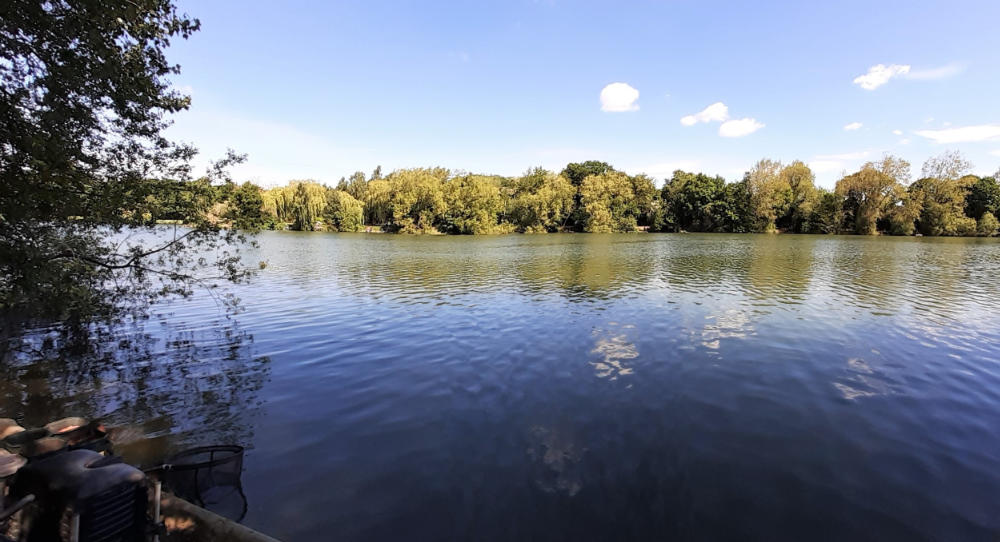
Out of the Way
Another place where hybrids were common was an old clay pit in Timberland, in Lincolnshire. A fishing pal directed me to this deep stillwater, otherwise I would never have found it, tucked well away off the beaten track. I soon discovered the venue was great for plenty of bites in the depths of winter, when it became easier to get through small stuff and find the bigger hybrids. Large chub were also present, but they were nearly impossible to catch, shadowing the shoals of hefty carp. The hybrids responded well to waggler tactics, fishing shallow out in open water, or close to features like overhanging bushes and rush lined bays. In this instance, I was trying to catch a big chub, which I could see drifting in and out of nearside cover to my left, but carp kept getting in the way, along with roach, rudd and hybrids.
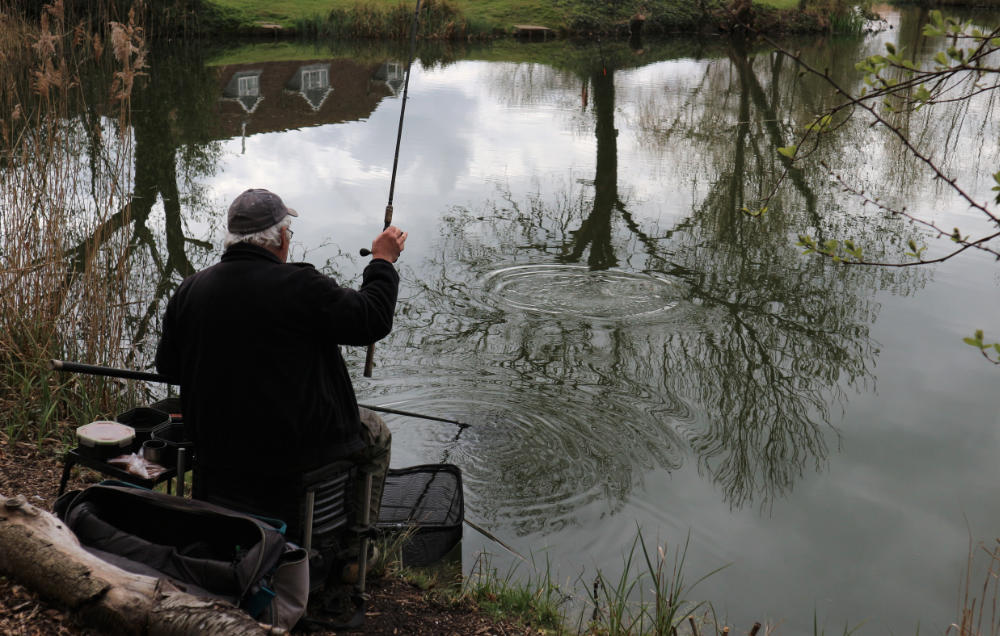
Testing Times
One half of this deep stillwater was frozen after navigating treacherous, icy country roads to get to it. The lake had an arctic green tinge, but-between snow flurries, I was managing to conjure up bites on pole tackle. I started connecting with some quality silver fish, when suddenly a proper elastic stretcher gave me a good runaround. I saw the flash of a big flank as it turned down in the depths, wondering if it might be a specimen roach. But then the fight became more dogged as the fish began using its weight, trying hard to dive into some underwater roots. I eventually netted this clean looking hybrid. I was still delighted with this catch, from a lake that gets very busy with specimen anglers and holidaymakers during summer, who probably never see fish like this. They tend to get shoved aside by hungry carp and the big shoals of bream.
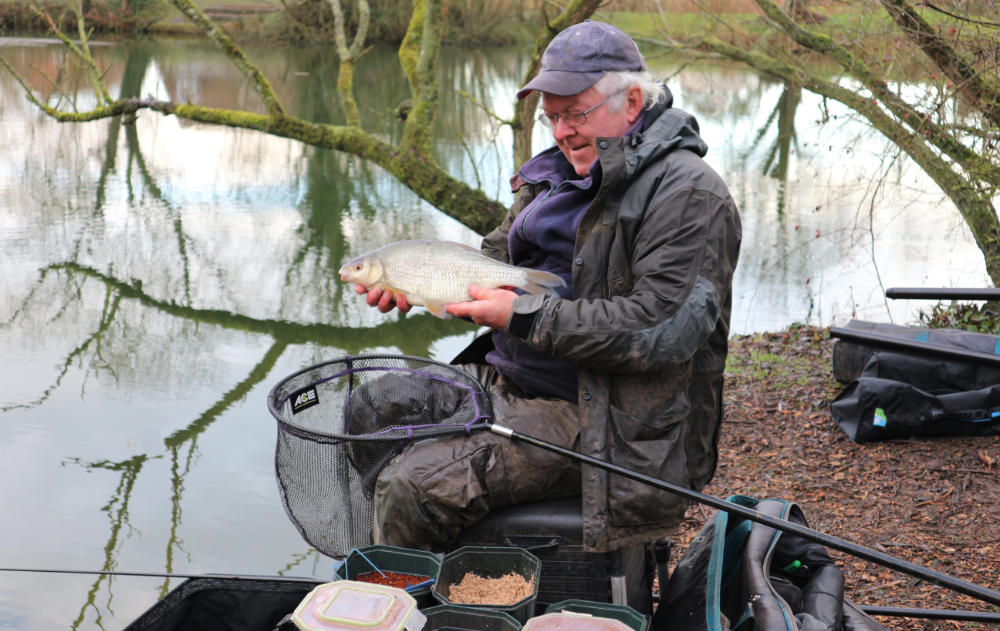
Winter Challenges
I love targeting big roach like this in the depths of winter, especially on day ticket venues when they are less busy during cold weather. Red fins pack on weight in waters with a big head of carp, mopping up any spod mixes that the bigger species miss. With fewer anglers on the bank and not so much free grub going in, chances increase roach will feed, along with hybrids. The last hour of daylight is often productive when it’s freezing cold, particularly as the sun dips below the horizon. Silver fish become more active and the chances of catching bigger ones increase dramatically. A float that has been motionless all day suddenly goes under, or a previously static quiver tip trembles into action. Helicopter set-ups with small maggot feeders have become a top cold weather tactic for me, an attack that has the ability to wake up lethargic stillwaters.
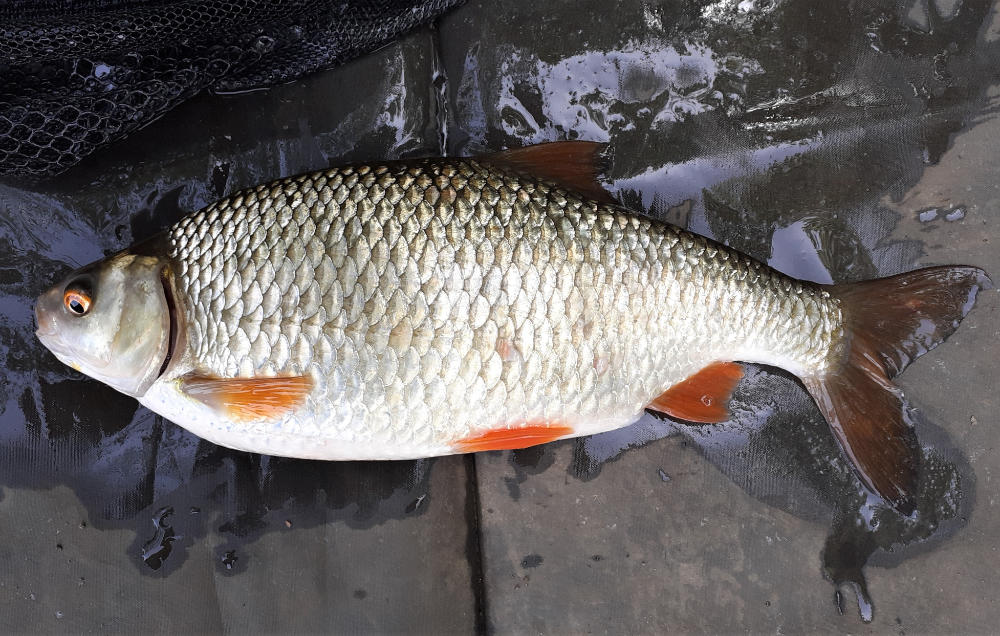
Chasing Shadows
A trait I’ve encountered on many popular day ticket lakes, especially deep ones, is the way big roach and hybrids have learnt how not to get caught. These crafty fish rarely take baits close to the bottom, staying well away from big concentrations of loose feed or groundbait, having realised they spell danger. Bigger specimens search around the edges of swims, where they carefully pick off odd morsels. Another thing they do is dart in and grab any free grub they can get to as it’s falling, well away from full depth float or feeder tackle. After it dawned on me what was happening, I started bringing shallow pole or waggler rigs into play as sessions progressed. By dinking regular helpings of maggots or casters around a sensitive tipped float, combined with light line and a small hook, a different class of fish like this superb hybrid often resulted.
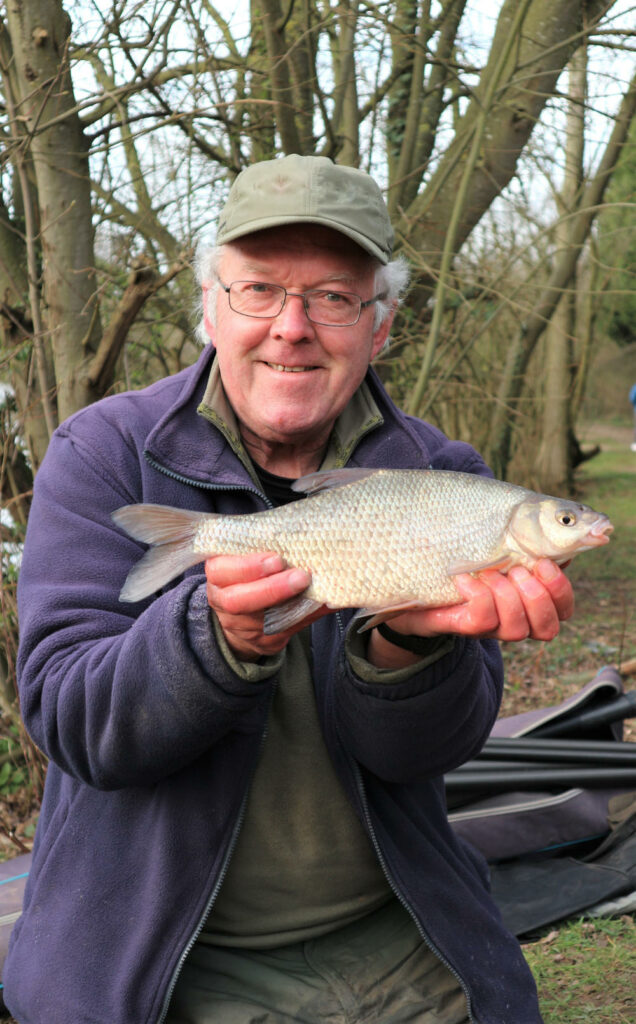
A Different Breed
I’ve noticed there are different types of hybrids. This one, which took a slow falling bait fished on a long hook length with feeder tackle, had a bronze tint to it. This highlighted its bream ancestry, while the hint of red in its fins signalled the roach side. A fish like this reminds me of another type of stunning hybrid I once caught on the River Suck in Ireland, which I suspect was a cross between rudd and bream. Those critters were more torpedo shaped, with many around the 3lb to 4lb mark. They were mad scrappers that fought like wild demons. On another venue, the hybrids hunted in packs and were an even deeper bronze colour, with much thicker set bodies. The only sure fire way of catching them was to fish at range with big bodied wagglers, feeding casters and sweetcorn in soft dark groundbait with a Whopper Dropper catapult.
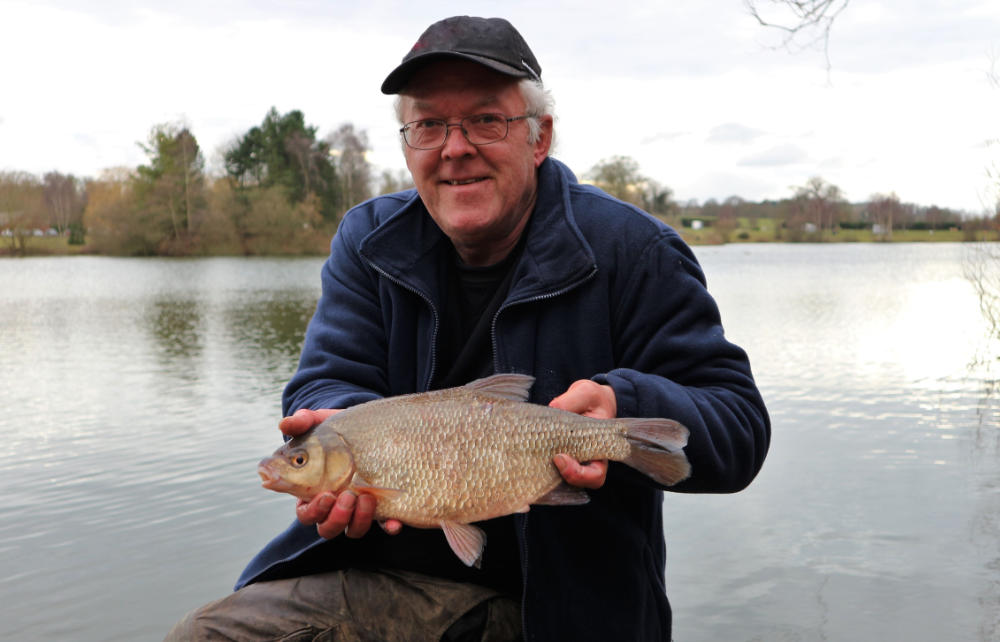
Roach Like
You could be forgiven for thinking a fish like this corker was a big roach, but hidden behind my hand is a longer than normal anal fin, which gave the game away. If you look closely, the head shape is not quite right either. I often wonder how many anglers get fooled by hybrids like this, which they could easily end up classing as specimen roach. I always become suspicious when hearing about whopping red fins, especially from venues where even two-pounders are rare. But all that doesn’t really bother me because to my way of thinking they are all great creatures to catch. This one interrupted a busy roach session, where I had managed to coax big fish into feeding shallow with a light pole rig. I was only using a size 20 hook and 0.08mm rig line, landing several roach over the pound mark, before this beauty took a liking to a single caster.
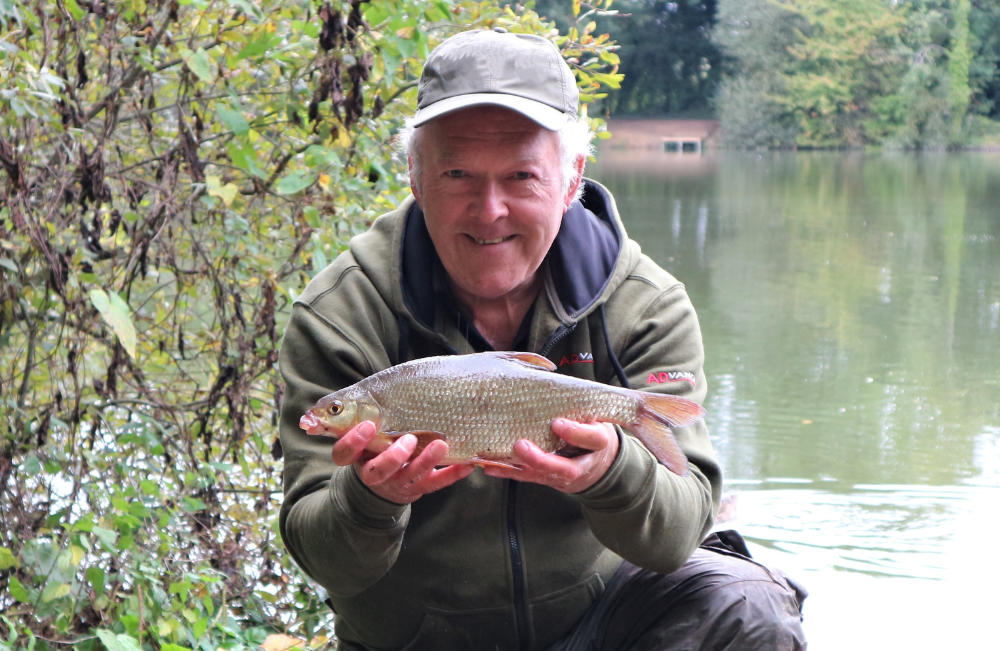
Tweaking Things
Feeder fishing is a sensible route to take when it’s cold. The fish are less active, so clipping up and casting into a tight area increases your chances of catching. I used to target hybrids with a long hook length while employing groundbait feeders, but have since switched to a new method. I now prefer helicopter rigs with short 5-inch traces and maggot feeders. Traditional helicopter set-ups entail big block ends and even shorter rotating hook lengths. I’m not keen on that, so I have refined my own way of doing things. I use small maggot feeders because they allow more regular casting, without any fear of over-feeding. I quickly discovered casting more frequently attracts bonus bites, compared to playing the waiting game with bigger loadings of feed. This encourages shy fish that don’t respond to conventional tactics to have a go.
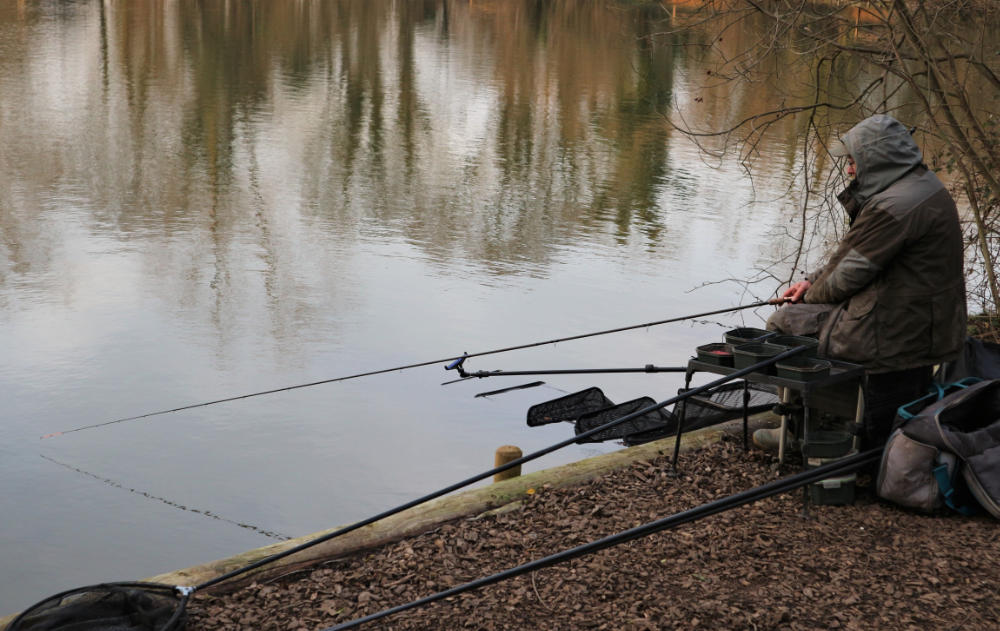
Different Again
Another type of hybrid is nearly colourless, like this beauty a mate weighed for me on digital scales, registering well over 3lb. I managed to land it on a ridiculously delicate pole rig, again fishing shallow, relying on a top kit with super stretchy hybrid latex. It inhaled a single caster four feet down in a very deep swim. I had followed my normal practice of starting on the deck over groundbait, regularly loose feeding. Plenty of smaller fish resulted, but when I tried switching to a shallow set-up, it took ages to gain bites. Eventually, an entirely different stamp of fish turned up. Big and wise old roach appeared, along with this hybrid, which nearly managed to bottom out my pole elastic, something even stray carp rarely manage to do. It took ages to land and if I hadn’t eventually got it in, I might have thought a pike had grabbed a small fish.
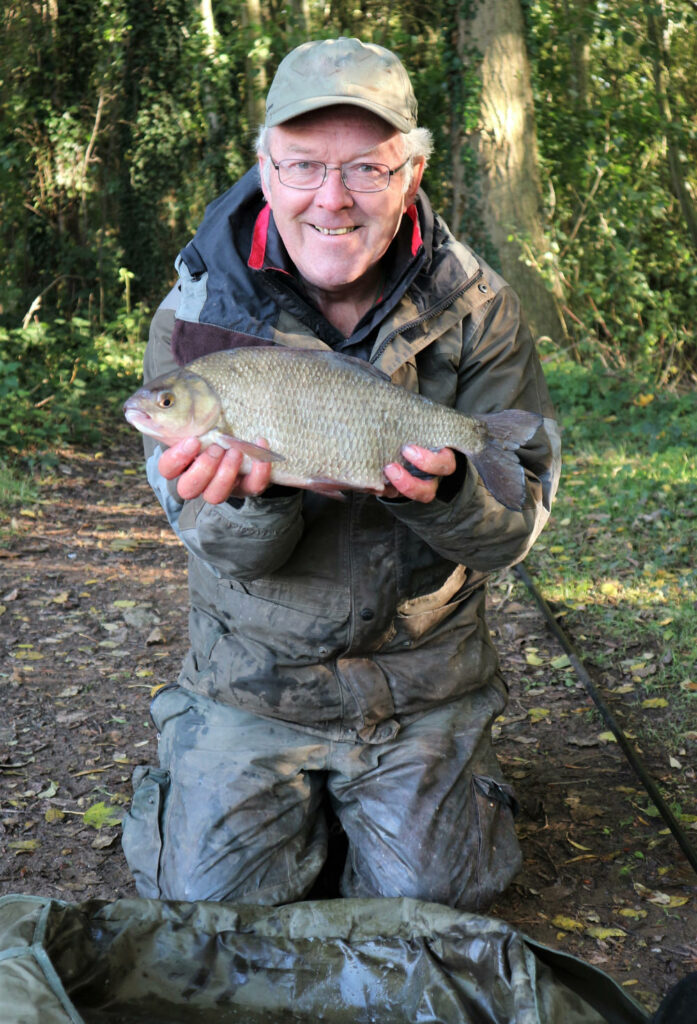
Epic Battle
A few swims along from where the previous big hybrid was caught, I latched into something far more powerful than the roach and skimmers I had been catching. Thoughts of a bonus tench or seriously big perch came to mind, but I somehow knew that wasn’t going to be the case. This fish was feistier in the way it tried to snag up my light rig. I was using a puller bung with my long pole, which allowed me to tension up the elastic. This helped me steer whatever was attached away from the tangle of sunken branches and tree roots in the margins. But even then, there was no quick surrender. The mystery intruder surged off several times, causing those heart-in-the-mouth moments when you think the light line is going to snap, or the tiny hook will straighten out. A spectator suggested a lively carp, but I wasn’t convinced about that.
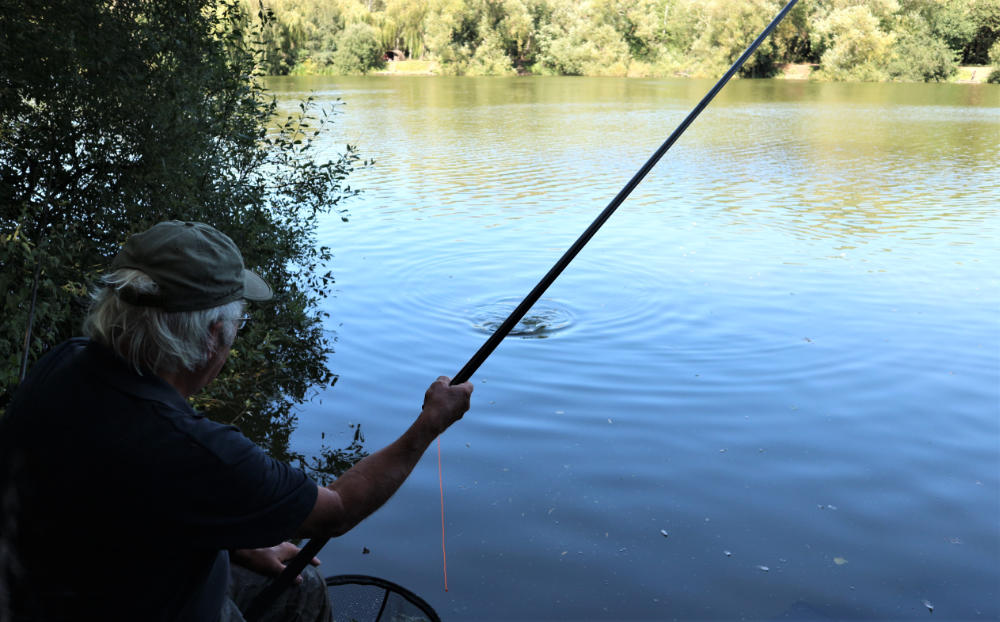
Close Calls
During that split second when a potential personal best slides over your landing net, all sorts of things go through your mind. Initially, this lump looked like a massive roach, not just a two-pounder, not even a three; but possibly more! At last, it was in the net. I’ve experienced close brushes with many fish like this, particularly specimen roach, which have a knack of shaking free of small hooks as they hit the surface. I had lost a couple recently, coming adrift and hovering just beyond reach, before darting off. I’d also lost a couple of giant red fins to pike. Crafty predators that lurk in the margins when you are catching plenty of prey fish, patiently watching for the opportunity to snatch any bonus bigger samples you might get attached to. Pike particularly like hybrids because they are so active and offer a much larger mouthful.
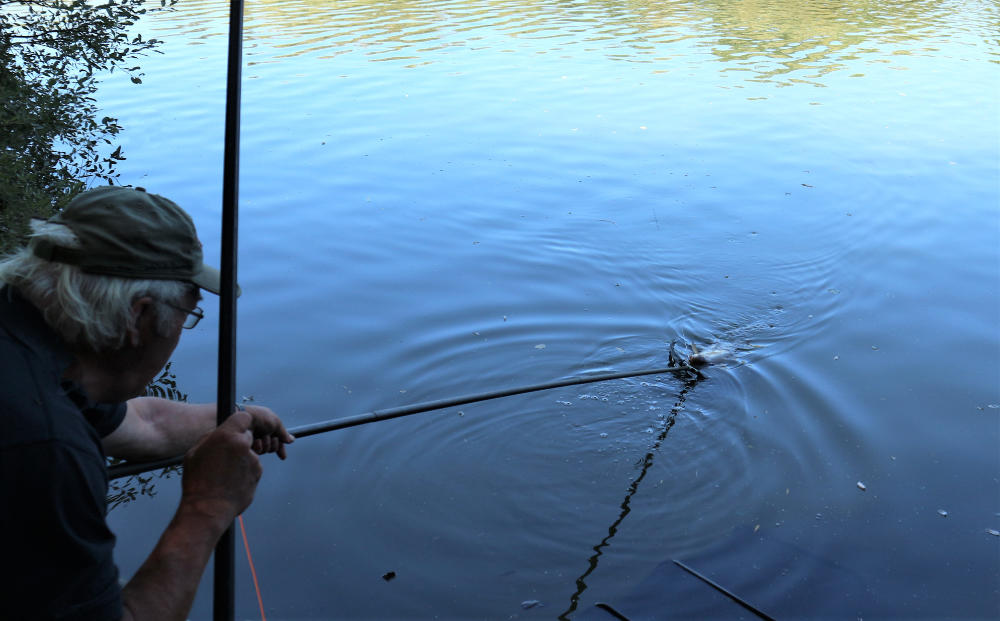
Strung Out
It would be easy to miss hybrids like this monster, which once again fell to offbeat tactics. On this occasion, my shallow rigs were only finding small fish, while a full depth setup was struggling. I was getting bites on it, but most were occurring just as my olivette pole tackle settled and were difficult to connect with. I tried pushing the bulk weight up to gain a slower fall of the hook bait, but it still wasn’t right. I always have a few back-up strung bulk rigs for deep water. They are a major pain to make up, involving long strings of number 8 Stotz weights. But on many occasions, the way they slow everything down in the last few feet of water as they descend, has proved extremely effective. This huge specimen grabbed a single caster a couple of feet off the bottom, as I held the tackle on a tight line, to slow down its descent even more.
